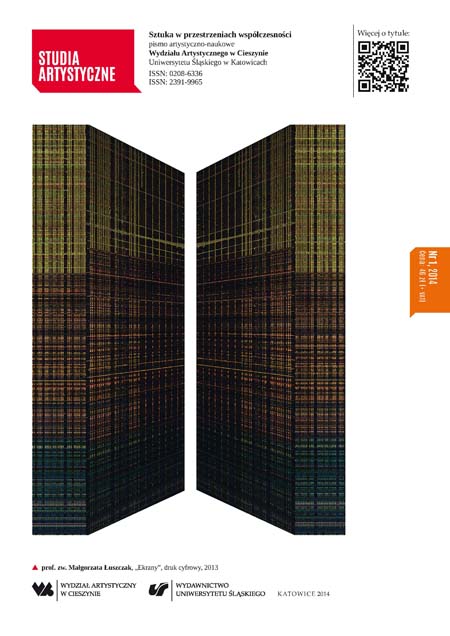Zrozumieć muzykę – ruch w edukacji dziecka
Understanding music – movement in children’s education
Author(s): Grażyna Durlow, Ewa BogdanowiczSubject(s): Fine Arts / Performing Arts
Published by: Wydawnictwo Uniwersytetu Śląskiego
Keywords: music; movement; child; education
Summary/Abstract: The article deals with the issues important from the perspective of a contemporary musical education in which, according to the authors of the article, there is a room for any actions allowing for getting closer to music, getting to know it, experiencing and understanding. In children’s education and upbringing one should enter the world of art, both as a real and perfect world. Music have accompanied people for ages and its role as well as prestige have changed many times. Nowadays, although music is almost omnipresent, we treat it differently, that is we do not notice it, do not listen carefully to it and we do not make any efforts to understand it. That is why the attempts to make music available to children, possibly as soon as possible, are priorities not only from the point of view of a musical education, but also general one, especially upbringing. Music can be learnt in different ways, but experiencing it by means of movement seems to be most obvious, in particular when it comes to a child, its nature, needs and interests. The way a child experiences the world is exactly the way it can experience music. It was notice by outstanding pedagogues, musicians, and dancers creating methods and systems combining music and movement (C. Orff, E. Jaques-Dalcroze, F. Delsarte, I. Duncan, R. Laban), giving them a universal value and meaning thanks to the originality of assumptions. The article presents the main assumptions of selected methods basing on the authors’ own long-lasting experience in working with children. Of course, it is a matter of choice if one should use one method or form compilations. What is important, however, is that a teacher could inspire him/herself from various sources to create tasks and treat well-known methods as a field of constant search. The authors present the process of gaining knowledge and skills with the use of actions based on the movement activity and aiming at leading to a fuller understanding of music by a child, taking into account a necessary subsequence of actions, namely listening, feeling, doing, understanding. They also enumerate and discuss characteristic spontaneous and oriented musical-physical actions such as improvisation, dancing, concrete musical-physical tasks and physical-spatial interpretation. The article shows the sense and peculiar efficiency of the correlation of music and movement in the area of children’s upbringing and education because such purely polysensory actions equally stimulate their cognitive, physical, social and emotional development.
Journal: Studia Artystyczne
- Issue Year: 2014
- Issue No: 1
- Page Range: 117-123
- Page Count: 7
- Language: Polish

